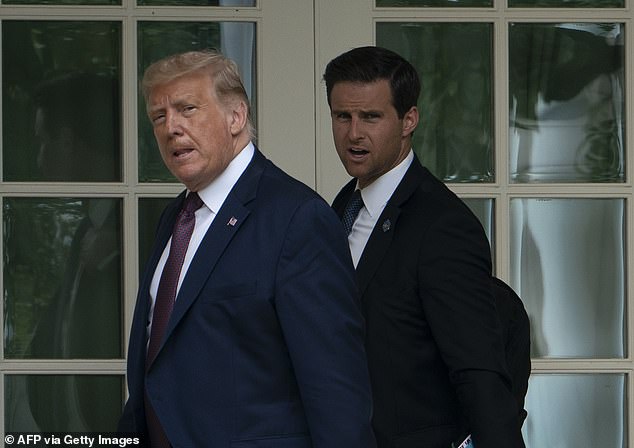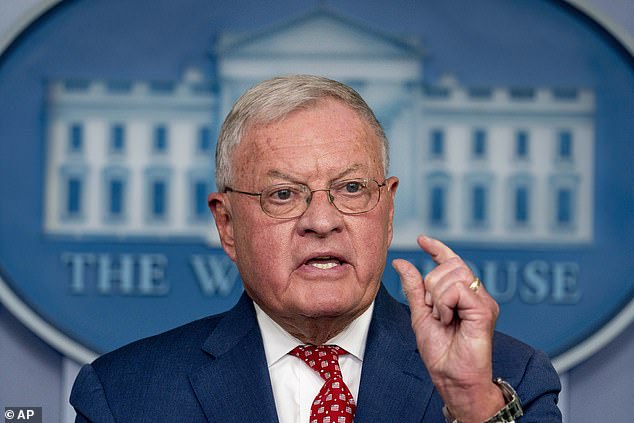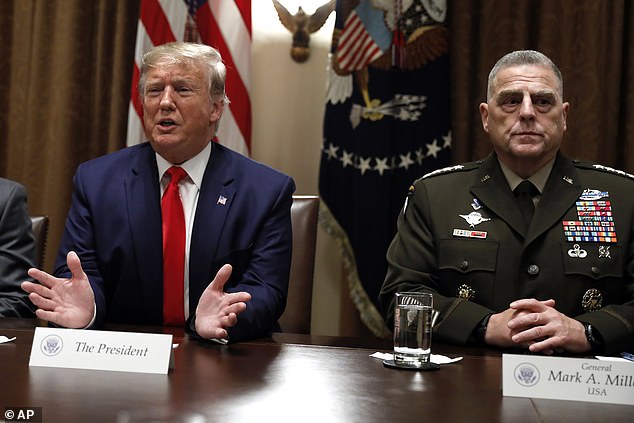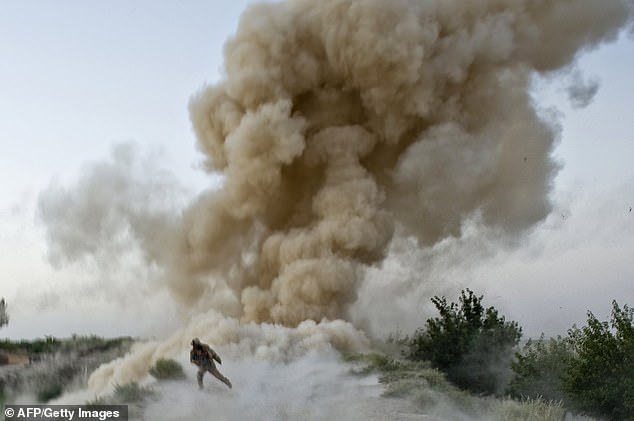Trump’s loyal ‘body guy’, 30, tried to write an order to pull troops from Afghanistan and Somalia in the administration’s chaotic final days, a new book claims
“This doesn’t look good,” said retired Lt. Gen. Keith Kellogg, national security adviser to Vice President Mike Pence, as he looked at the military directive ordering U.S. troops out of Afghanistan and Somalia.
Gen. Mark Milley, then chairman of the Joint Chiefs of Staff and President Donald Trump’s top military adviser, couldn’t hide his disbelief during the late 2020 meeting.
“Are you telling me that thing is fake?” he said, “Is that a forged piece of paper showing the direction of a military operation by the President of the United States?”
The extraordinary moment is revealed in a new book, “Tired of Winning: Donald Trump and the End of the Grand Old Party,” by ABC News Chief Washington correspondent Jonathan Karl.
It describes how a 30-year-old aide led a chaotic effort to bring American troops home.
American troops have fought in Afghanistan for twenty years. President Donald Trump wanted to bring them home before the end of his presidency, but had no idea how to do it

Presidential Personnel Office Director John McEntee in 2020. He played an increasingly important role in the final days of Donald Trump’s presidency later that year
And it describes the horror experienced by seasoned officials as they realized that Trump and his loyalists had bypassed the usual policy process, with its legal checks and balances, in an attempt to reshape the country’s military posture.
The young aide was John McEntee, a former college quarterback who began working for Trump at age 25 as his “body guy,” carrying the presidential candidate’s bags and passing messages.
He was fired in 2018 when a background check revealed a gambling habit was so serious it was considered a potential national security risk.
But a change in White House chief of staff brought him back, this time as director of the Presidential Personnel Office, responsible for hiring and firing.
He did his job with the zeal of a loyalist, rooting out anyone he deemed insufficiently Trumpist.
After the 2020 election, during Trump’s final weeks in power, he played an even more important role, Karl writes in an excerpt published by Vanity fair: He played a central role in the removal of Secretary of Defense Mark Esper, replacing him with Christopher Miller and his senior advisor Douglas Macgregor.
McEntee also wrote a list of goals for the end of the presidency, including removing troops from Afghanistan, from Iraq and Syria, from Germany and from Africa.
Although some details of the story have been previously reported, what happened next was uncovered by the January 6 congressional committee investigation but never published.

Trump is seen with McEntee outside the Oval Office of the White House on September 11, 2020

Tired of Winning’ by Jonathan Karl will be published by Dutton on November 14
“Three days after Macgregor arrived at the Pentagon, he called McEntee and told him he could not accomplish any of the items on their handwritten to-do list without a signed order from the president,” Karl writes.
Macgregor told them to focus on Afghanistan and include a specific deadline for withdrawal. He suggested January 31, 2021.
“McEntee, of course, knew nothing about drafting a presidential directive – let alone one that instructed the movement of thousands of military personnel,” Karl continues.
“He worked two jobs in the White House – only one of which he was qualified for – and neither had anything to do with national security or the military.
“An order that is even 10 percent as consistent as the one McEntee was drafting would typically go through the National Security Council, with input from the Pentagon’s civilian leadership, the Joint Chiefs of Staff, and military commanders in the region.
“Instead, the guy who usually carried Trump’s bags was typing it out on his computer, consulting with no one other than the retired colonel the president had just hired because he saw him on cable TV.”
Macgregor said they had to find an old memo of the presidential decree and copy it.
When McEntee and his aide finally wrote up the order, they had it signed by the president and sent to Kash Patel, the chief of staff to the new acting secretary of defense.

Mike Pence’s National Security Advisor, Keith Kellogg (seen here in 2020), immediately questioned the validity of the directive. “This doesn’t look good,” he said

General Mark Milley (right), Trump’s top military adviser, immediately demanded to know who had advised the president on plans to withdraw troops

A U.S. Marine from the 2nd Marine Expeditionary Brigade flees to safety after an IED blast in the Garmsir district of Helmand Province in Afghanistan on July 13, 2009. Two U.S. Marines were killed when the explosion occurred as they attempted to establish a route to the Taliban to free. heartland
But it caused an immediate uproar when it reached the acting defense secretary and other senior officials.
Milley immediately wanted to know who was giving Trump military advice, which was, after all, his job. When no one could answer, he went to the White House and the extraordinary meeting with Kellogg, who smelled a rat.
Kellogg thought the only thing that looked official was the president’s signature, but even that could have been wiped out by an “autopen,” which was used to sign hundreds of letters.
The concerned officials confronted Trump. He said he had signed the document, but they quickly explained that such a bold move had to go through a thorough policy process.
“I said this would be really bad,” then-national security adviser Robert O’Brien recalled telling Trump.
“Our position is that because it didn’t go through a proper process — the lawyers didn’t approve it, the staff (the secretary) didn’t approve it, the National Security Council didn’t approve it — our position is that the order is null and void. ‘
Trump’s plan to end the war in Afghanistan fell apart almost as quickly as it was put together.
